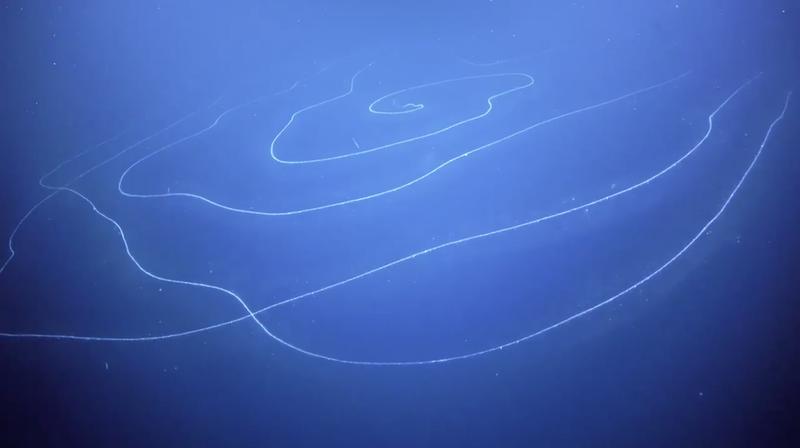When we think about terrifying monsters, we often think of them as being space. Movies like Alien depict the horrors that await us in the unknown regions of space. The good thing is that we are very far from space, so none of those creatures will be getting us anytime soon.

The terrors of space may be far away, however, the sobering truth about the Earth is that the ocean is just as vast, unexplored, and full of terror as space. We haven't even explored much of the ocean, and since its creatures can flow freely, who knows which ones are evading our eyes.
The ocean is home to many creatures some would call unnatural. Their lives are nothing like the creatures who live on the surface. It leads to some very interesting evolutionary decisions. Don't believe me? Just check out this bizarre sea creature that looks like a galaxy floating in the water.
A group of scientists were aboard a research vessel recently when they saw a sea creature with unbelievable qualities. They said it looks like silly string floating in the water, spiraling like a galaxy. The Schmidt Ocean Institute shared an incredible video of this creature called an Apolemia which is a type of siphonophore. They spotted it while on an expedition near Western Australia in the deep sea of the Ningaloo Canyons. It was taken not long on March 16th, 631 meters underwater during a month long expedition.

Since the Apolemia spirals, it is difficult to measure it, but using laser technology and a remotely operated vehicle, they are guessing it is 154 feet long. Carlie Wiener, the director of marine communications at Schmidt Ocean Institute, said, “we think it's the longest animal recorded to date.”
The Monterey Bay Aquarium Research Institute describes Siphonophores as predatory animals of the deep who are closely related to corals and jellyfish. They use a curtain of stingings cells to capture tiny prey like small fish and crustaceans. If that isn't weird enough, it is made of individual clone bodies that work together as a single organism.

In the Schmidt Ocean Institute's month long expedition, they estimate they have discovered up to 30 new species after completing 20 dives aboard their ship, Falkor. The co-founder of the Schmidt Ocean Institute, Wendy Schmidt, said, “There is so much we don't know about the deep sea, and there are countless species never before seen. The Ningaloo Canyons are just one of many vast underwater wonders we are about to discover that can help us better understand our planet.”
The Schmidt Ocean Institute has also been doing their part during the Coronavirus. According to Weiner, the team has been doing live streams to kids so that they can have educational content from their homes during quarantine. "The ability to continue to do science and bring remarkable footage and something really positive to the world has been really nice.”

Rebecca Helm studies jellyfish at the University of North Carolina Asheville. She saw the video on Twitter and helped people understand why finding Apolemia is so important. "I've gone on numerous expeditions and have never, EVER, seen anything like this. THIS animal is massive. AND not just massive, the colony is exhibiting a stunning behavior: it's hunting." Helm even believes that this particular Apolemia could be tens if not hundreds of years old. It goes to show you just how little we know about what lurks beneath the water.